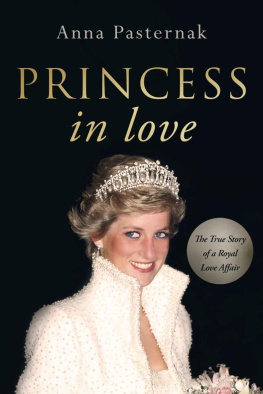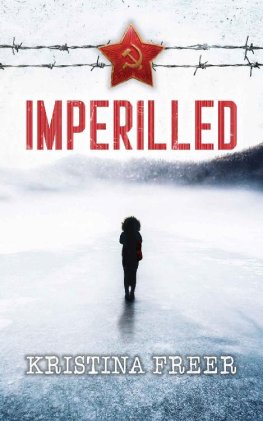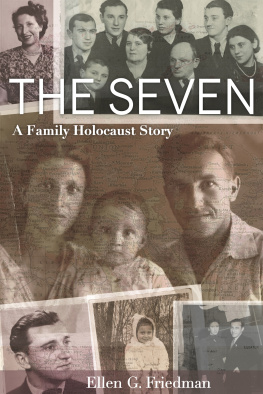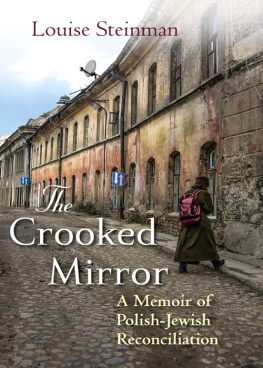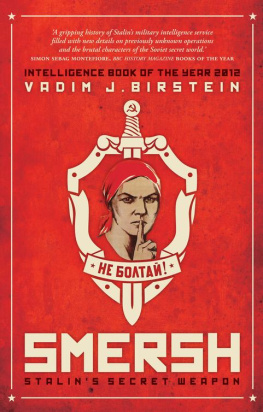The Untold Story of a Young Girl During WWII
A Memoir
Copyright 2017 Anna Pasternak
All rights reserved
First Edition
PAGE PUBLISHING, INC.
New York, NY
First originally published by Page Publishing, Inc. 2017
ISBN 978-1-64082-024-1 (Paperback)
ISBN 978-1-64082-025-8 (Digital)
Printed in the United States of America
This labor of love is dedicated to my dear grandchildren,
Eden and Daniel.
My grandchildren-Eden and Daniel
Acknowledgments
First and foremost, I am indebted to my dear mother who acted on my suggestion and undertook this project. The whole chapters which are incorporated here she so ably wrote in Yiddish and I was able to translate.
To my dear cousin Rachel, who left us at the age of 92, who had a phenomenal memory almost to her last days and filled the gaps when needed.
The first run of language corrections, where needed, was ably done by my daughter Daphne. When technology became a factor, Sandra lent a hand, but the bulwark of technological work was willingly and expertly provided by a true gentleman, Olivier.
I am grateful to all those relatives and friends who urged me to continue and not give up.
This project was about 30 years in the making.
Introduction
My photo for train pass-1937
While I visited my mother in the late 1970s, we had a discussion about a certain event in our lives that took place during World War II.
The actual subject of the conversation eludes me, but I remember that our recollections differed.
It occurred to me then that my younger sisters, Leah and Sarah, might not know much about our familys past, the war years, and probably very little about their own background, so I asked my mother to write down some of the things she remembered. At first she laughed but later agreed that it was a good idea. After all, she had plenty of time.
I instantly realized that such a project would occupy her, exercise her mind, and give her an opportunity to record some family history for future generations.
Whether anyone would be interested in the past or would read it was of no concern at the time.
During my next visit a year or two later, my mother presented me with a shoe box filled with written scraps of paper of various sizes. I was moved to tears. She had written about her life, her siblings, and other members of the family. She wrote about her childhood, young adult life, education, marriage, the war years, and much more. It was all in Yiddish, her favorite language and one she was most familiar with. She agreed that families owe it to their descendants to inform them about their past.
While reading those sheets of paper, I discovered fascinating information about the family including myself that I had no knowledge of or had forgotten. I complimented her on the great accomplishment and urged her to continue. It was not a literary gem but a sincere account of her life and ours.
When I returned home, I thought about the assignment I gave my mother and the important work she was doing for our family and thought to myself, Why dont I do the same? Though our lives were intertwined, I might remember certain things she didnt, and vice versa.
Several of my relatives expressed an interest in the project and urged me to go on. My story may not be chronologically accurate, but its what I remember.
Some of my relatives also contributed information I didnt have, and I am grateful. Some relatives requested to remain anonymous, so their names may have been changed in some way or omitted.
The Internet was also helpful with some of the statistics. Please keep in mind that this narrative is what I remember. Geography and some places, people, events, or names may also differ. I did make every effort to stick to the truth. If any of my relatives remember things differently, thats their prerogative.
Zbydniw, My Birthplace
I was born in a small village called Zbydniw, situated in the southeastern part of Poland called Galicia. The nearest town, Rozwadw, todays Stalowa Wola, was about eight kilometers away. The closest villages surrounding Zbydniw were Majdan, Zaleszany, Turbia, and Kotowa Wola. The village took its origins on the banks of an old tributary of the river San.
Zbydniw has been in existence about eight hundred years, not necessarily always under the same name. The name Zbydniw was taken from Zbygniew Horodynski, the great-grandfather of the last owner of the Horodynski estate. Centuries ago, most of the land in Poland belonged to the kings and was in turn leased or awarded to the Polish gentry for favors granted to the kings.
Poland was often attacked by neighboring countries, and the kings needed cash in order to outfit the army. The kings coffers were often empty, so that was when they turned to the nobility for loans. Many of these loans were returned in the form of farmland and other properties. That was how, in the early nineteenth century, the nobleman Mr. Zbygniew Horodynski acquired the whole village including much of its surroundings.
In the middle of the fifteenth century, Zbydniw had only fourteen residents, and as time progressed, the population of the village grew, especially after the arrival of the Horodynski family. The enlarged estate of about 1,200 hectares that Mr. Horodynski received consisted of orchards, forests, fertile-soil farmland, and riparian rights to the San Riverin itself a very valuable asset. Now that he owned this vast estate, he was in need of workers; thus, he attracted many farmhands and other skilled laborers from neighboring villages as well as other parts of the country.
Eventually, some professionals also found employment and settled in the village.
The majority of the inhabitants, including my father, worked for the local squire, Dominic Horodynski, the heir and great-grandson of Zbygniew Horodynski. At the beginning of the twentieth century, there were over several hundred inhabitants in Zbydniw. The religious composition was 99.9 percent Roman Catholic and forty-eight Jews (must have been my fathers family). In 1939, only eighteen Jews lived in Zbydniw.
Before World War II, the Horodynskis, in addition to all the land, owned a flour mill, a sawmill, a brewery, livestock, horses, carriages, and a black Fordthe only car in the village. One of the squires great passions was horse racing, and he owned and bred many of them. Most of Horodynskis employees lived in his properties, as did we. Everyone paid rent or provided services.
Several professional residents of Zbydniw come to mind: the postmaster, the trainmaster, a blacksmith, a shoemaker, a butcher, a carpenter or two, some teachers, and the Catholic priest.
The Horodynski family occupied a most opulent mansion situated on many manicured acres of luscious gardens. The mansion was enlarged, modified, and modernized several times over the years. In addition to the main building, there was an orangery, a hothouse, stables, a garage for the masters Ford, and a carriage house. All this was surrounded by a high concrete wall with trees growing along the inside. The top of the wall was strung with barbed wire and shards of glass imbedded in the concrete. The interior must have been as impressive as the exterior, if not more; though I had seen only one room in the mansion once, the impression remains with me to this day. I will describe this memorable visit later.


